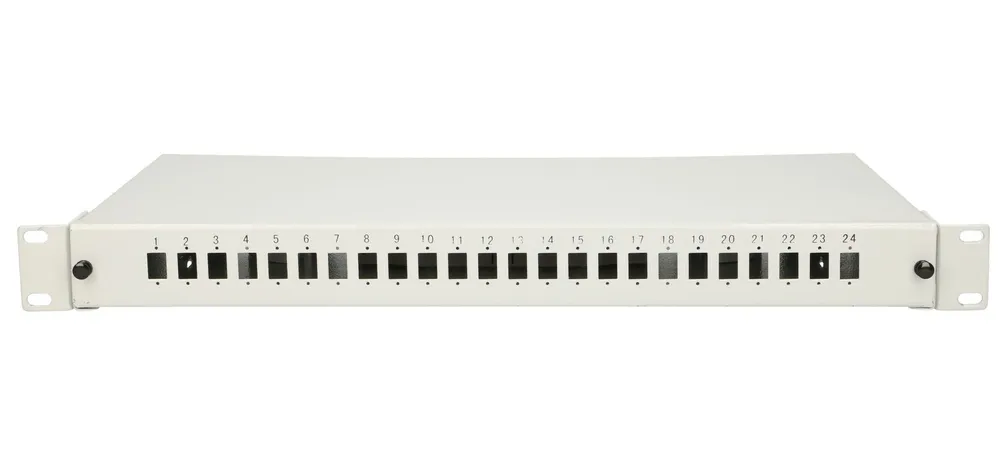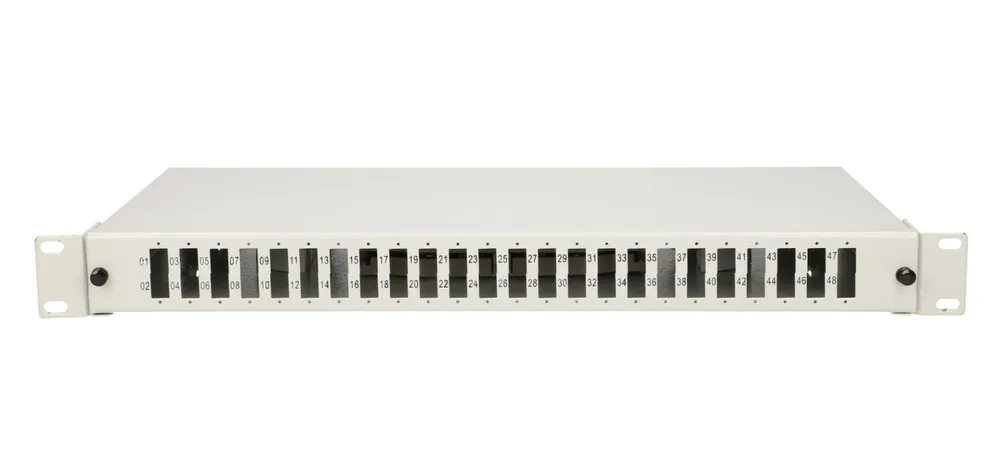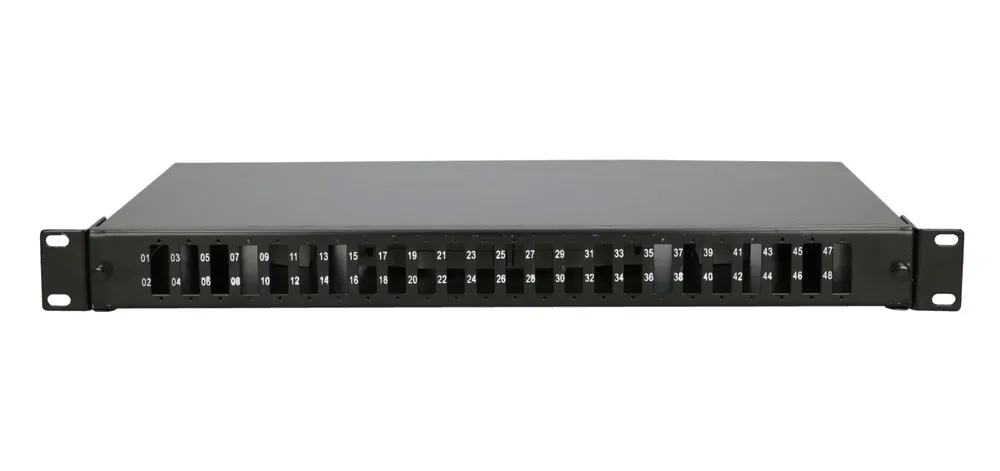What is a fibre optic patch panel?
Fibre optic patch panels, also known as switch boxes, are essential components in the management and organisation of fibre optic networks. They are used to connect, organise and protect optical fibres, enabling easy and fast connection and disconnection of cables in the network infrastructure. Patch panels are rack-mounted and provide convenient access to fibre connectors for easy network management and servicing.
Types and classifications of fibre optic patch panels
- Number of ports - Patch panels are available in a variety of configurations, usually with 24 or 48 ports, allowing the appropriate number of fibres to be connected. A higher number of ports is ideal for more extensive networks.
- Type of assembly - The panels can be mounted in 19-inch racks, which is standard in the IT industry. There are also models designed for wall mounting or other specific locations.
- Connector type in patch panels can be adapted to different types of fibre optic connectors such as LC, SC, ST. The choice depends on the type of cables used in the network.
- Housing type - from simple metal cassettes to more advanced models with additional features such as cable holders or space for cable organisation.
How do I choose the right patch panel?
- Number of ports: Determine how many optical fibres you want to connect. If your network needs to support more connections, consider a patch panel with 48 ports, such as the following Extralink 48 Core. For smaller installations, a 24-port panel may suffice, e.g. Extralink 24 Core.
- Type of assembly: Make sure that the patch panel you choose fits the type of mounting in your rack. Most patch panels are designed to fit 19-inch racks as standard, but it is worth checking this before you buy.
- Connector type: Match the patch panel to the type of connectors used in your network. If you use LC connectors, choose a panel that supports them.
- Additional features: Consider whether you need a panel with additional features such as cable management or a reinforced housing. For example, the model Extralink 24 Core V2 offers an improved design that can be beneficial in more demanding environments.




